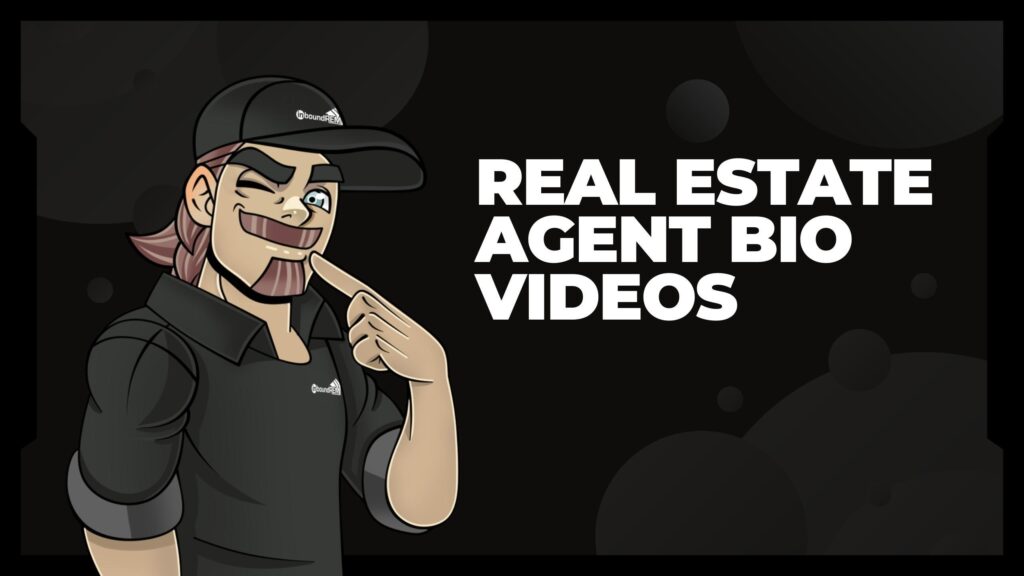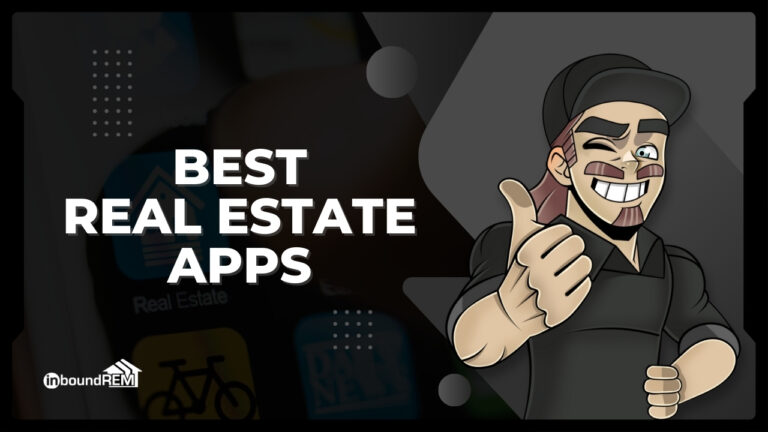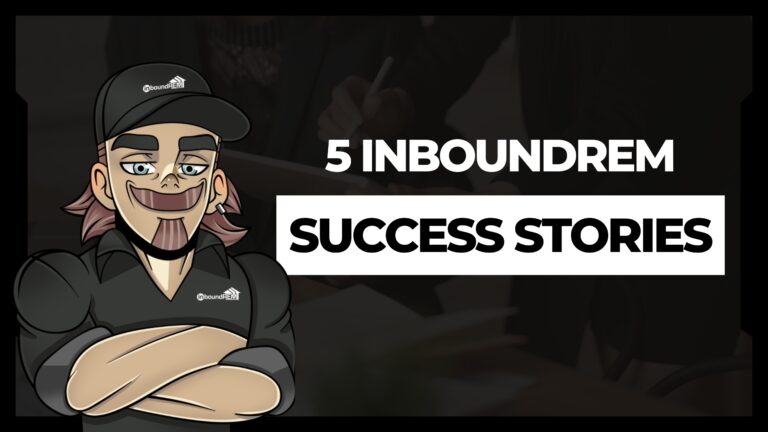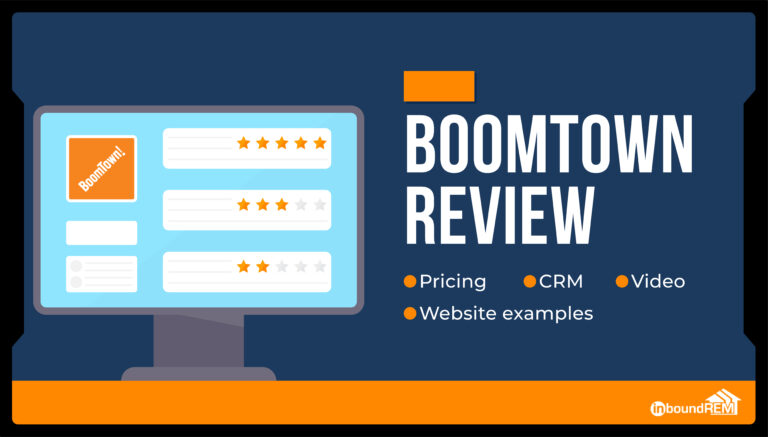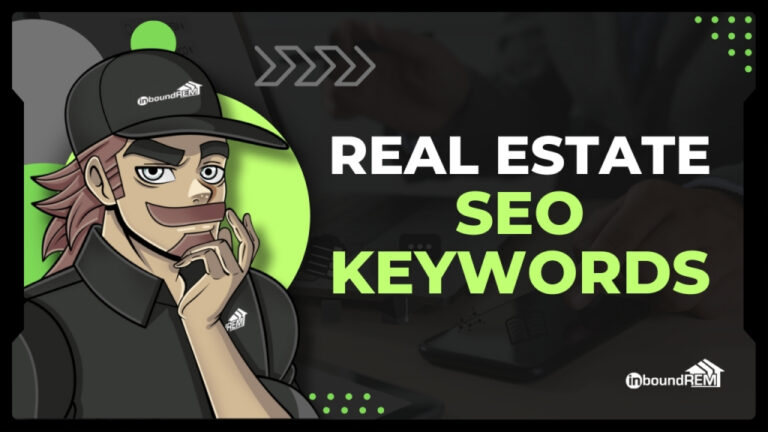This article is part of our series of pro tips, scripts, and secrets for creating real estate videos as an agent. You can also check out our Housing Market Report Videos and Guide to Neighborhood Tours.
The #1 Mistake Agent Bio Videos Make
Before you jump into creating the best introduction video for real estate agents, you may want to check out How to Write Real Estate Bios That Convert 50% More Leads.
We packed that article with advice that corrects the biggest mistakes agents make when creating bios, whether written or video. It offers strategies based on the way leads actually decide to contact realtors.
The biggest mistake agents make is assuming that the main purpose of an agent bio is to list credentials.
The power of real estate agent bio videos lies in showcasing your personality so that leads feel like they already know you.
We still encourage mentioning your experience, awards, and past transactions. But the main reason people become comfortable enough to reach out is the discovery that they like you.
Real Estate Bio Video Myths
1. Only High Production Videos are Effective
The production value of your real estate bio video is a matter of branding. Luxury real estate agents should consider hiring a company or local freelancer to create a polished video with B-roll, professional lighting, and high-quality editing.
However, simple agent bio videos at your desk or even in your car can be highly effective to encourage inbound leads. Realtors serving millennials or first-time homebuyers may even find this technique more effective.
Check out this example real estate bio video that is virtually as simple as it gets.
Even if you only want to dedicate 20 minutes to creating a super simple agent introduction video, it can be highly valuable to post across YouTube, LinkedIn, Facebook, and your website.
I don’t recommend wearing sunglasses. It creates a distance between you and your viewers. In fact, there’s a strong correlation between eye size and clicks on YouTube thumbnails.
2. You Need to Feel “Camera Perfect”
I know successful YouTube agents with speech impediments, English as a second language, and even 55-year-old realtors with zero prior video experience. I even know one agent who is all three, but her channel has thousands of subscribers!
Viewers will forgive all kinds of “imperfections” because video is just that valuable to potential clients. Don’t let perfectionism or insecurity stand in the way of boosting your business and improving your livelihood.
3. You Need Special Equipment
Your smartphone/computer and stock video editor is perfectly fine. The only piece of equipment you may want to invest in is a windshield mount or handheld tripod to stabilize the shot.
Tips for Writing Agent Bio Video Scripts
1. Tell Your Story
You may be surprised to hear that an effective self-introduction video can be 20 minutes or longer. Many agents think that potential leads don’t want to hear a personal story. But this is another big misconception.
Your personal story, including details that go beyond your personal career path, offers viewers ample ways to connect with you. It humanizes you. Viewers get the chance to see you as a real person, not someone trying to win their commission.
If you don’t believe me, check out my new 35-minute introduction video. Between this and my older 20-minute video, this strategy has inspired more outreach than any other piece of marketing content I’ve produced.
If you are watching this video, it’s because you’re on this page, which is who is Robert Newman? I have always been a lover of a big believer in the magic of storytelling. In terms of my entire career, I believed that what we do for our livings is very much impacted by our personal story.
And, I have shared in many different places, on podcasts, in writing, on my own website, about real estate, like what realtors should do about bios. I have strongly encouraged the concept of being a little personal, sharing your story, letting people know who you are. Because at the end of the day, we’re always doing business with other people, and when you’re doing business with a company, oftentimes even if that company is fairly large, you’re doing business with whatever that founder’s vision is, and you either buy into that vision or you bought into the results of that vision, like Amazon having things delivered next day.
So what’s my story? What’s Robert Newman’s story? Well, Robert Newman was born in California, specifically in Newport Beach, to a young lady who got pregnant with me in 1969. She was very young and had me out of wedlock in 1970. This wasn’t a great time to have an accidental pregnancy, and it was particularly unkind to my mother. Her family pushed her out of the family circle of trust, and she had to support herself. As a result, I ended up growing up for the first few years of my life being raised by people other than my mother. My father was never in the picture, and I don’t know much about him. My mother passed away when I was very young, at the age of 17.
However, I was lucky because when she did come back to raise me when I was about three years old, she brought another man into my life who has been my father my entire life. He promptly adopted me a few years later, and so I talk about my family. My brothers work for my agency, but this family is my adopted family. They took me in and have kept me close for many years. So my life, in a weird way, because my mother passed young and my father kept raising me, is a product of the kindness of people that did not necessarily know me prior, and it definitely forms a lot of my philosophies when it comes to how I do business and what I’m looking to accomplish in the world, which is basically to give back some of the things, some of the great experiences that I’ve been given throughout my life.
My family moved around Southern California when I was young, and like most teenagers, I wasn’t getting along with my dad very much. So at the age of 17, I had the brilliant idea to get a GED, leave school, and go directly into the workforce. I had about 50 different jobs, and none of them stuck. I didn’t find anything that I loved. However, my family raised me without television or media, but they had a library in the house with thousands of books. I was always reading books from a very early age, which gave me an idea that even my own family didn’t give me.
Both my parents were coders, and my mother was managing developers. My dad was coding in Cobol and helped create the original code for the day and night tellers. They were the original people where you could put a card in and money would spit out at you. My exposure to technology and the idea of technology happened very early in life, even though I personally didn’t have the gift of mathematics.
When I left home and went through all these jobs, I became kind of like a punk rock homeless person, running around the streets of Hollywood.
It was 1988 and 1989 when I started to get ready for an idea, and I was living the life of a punk on the streets of LA. That’s when I first learned my first really hard lessons on life because it was fun and exciting for all of a week, and then it just got hard and depressing. I learned real quick that the only way for me to change my circumstances was to change my behaviors, change my habits. And that’s where those books that I mentioned really came in handy. I had read enough books to understand the very broad concept of mindset affecting results, and that there were two ways in the US to make a lot of money: owning your own business or going into sales without a technical skill set.
I chose sales and entrepreneurship, and my first business when I was 19 was a cleaning business. I started to change my life, and the way that I changed my life was by dedicating myself to learning the art of sales. My first sales job was selling perfume hand-to-hand on the street. We would chase people down and say, “Hey mister, got a minute? Hey ma’am, got a minute? I’ve got something really incredible to show you.” We would have this bottle of perfume in our hands, and we would ask them to smell it and tell us what they thought.
I did that for a couple of years, and then I got a job as a telemarketer when I was about 21. That job would change my life. While I was very bad at it for the first few months, I spent a lot of time listening to every single person on the phone. I became really good at every single script and every single thing that everybody was saying. I started to learn the concept that for everything somebody said to me on the phone, there was a response or a rebuttal. I also had my first mentor, Billy Halverstadt, who showed me how to run call centers and analyze results.
By the time I was 23, I was running the call center I had started working in when I was 21. I became very good at push marketing, convincing people to do something they weren’t intending to do in the first place. I had the chance to learn from the best sales trainers of the day, including Zig Ziglar, Tom Hopkins, Brian Tracy, Dennis Waitley, and Earl Nightingale. I spent thousands of hours learning about the psychology of selling and the mathematics of making sales calls in volume.
Along the way, I started a couple of businesses, including a consulting business. I even taught at a few colleges as a guest speaker, despite being a high school dropout.
But anyway, here’s a strange thing. I, a high school dropout, have taught at quite a few colleges, just little courses as a guest speaker or as somebody who’s walked in. I got very, very good at communicating the idea of learning to be excited about things that most people are not excited about, like door knocking and phone calling. I learned that in my early 20s.
Unfortunately, in the middle of my life, I had a relationship with a woman, and it fell apart. It mentally and emotionally destroyed me. Believe it or not, even though I was hanging out with punks and doing a lot of stuff in the streets of L.A., I was always pretty much a clean-cut kid. But when my relationship fell apart, I started drinking heavily and ended up developing a drinking problem. That’s where my professional story staggers a bit.
I did still do many things. I consulted with ADT, ran canvassing crews, and sold security systems. I went through a whole bunch of jobs, just kind of blindly wandering from gig to gig. I was always able to get the gigs because I’ve always been very, very good at selling or training others to sell. I’ve always been an asset wherever I went.
Well, seven years of that and a couple of minor things worth mentioning. But here’s where my story really gets interesting. I got sober, and as part of getting sober, I managed to lose all my friends and family. Nobody’s talking to me anymore. It was pretty much a deep bottom. I was living on the streets, staying between the Long Beach mission and the LA mission.
Somewhere in that journey, I hit my bottom and decided to stop drinking. It wasn’t simple. There were many tries and failures, and I ended up losing a big business I had established. I lost everything because of drugs, ending up in jail. My partners sold everything out from underneath me. Many things in the middle were drug and alcohol-related, and I learned a ton of lessons.
At about 36, I made the decision to change. I realized that the days of door knocking and telemarketing were limited in terms of their efficiency. The industry had been changing for a long time. Most effective telesales now happen on the inbound side, where people call you because they’re your customer or have received something from you. I recognized that and wanted to get out of telemarketing.
I got a job as a telemarketer at Girls Gone Wild, a company that everybody knows and loves, or usually loves to hate. I got the job because they were close to the Long Beach shelter, where I was living at the time. I was just getting sober, living in the mission, and working all day and all night selling DVDs and continuity programs over the phone.
Within the first year of being sober, I was running the largest series of call centers I had ever run. I was in charge of a budget of seven million dollars in direct advertising. But that gig ended with the FBI raiding the building. I wasn’t really unhappy when it ended. I had saved money and paid off old warrants and restitution.
I wanted to get into online marketing and real estate. I sent out 300 resumes after leaving Girls Gone Wild. It took me 300 resumes to even get a single call. And I started, I think I took a week off and then I started sending out resumes. In my brain, because of all my sales history, I thought that would be a golden ticket into tech. But boy was I wrong. It took me 300 resumes to even get a single call, one phone call. That’s it.
Actually, that’s not true. I’m sorry, I forgot. There was another call from Radiant Seven. And then I got a call from Agent Image. Agent Image didn’t take me, they said I was too old. The other place that called me was Agent Image, John Crabb, one of the founders.
The funny thing is that the first 200 resumes I sent out, I was using the corporate global name for Girls Gone Wild, which is Mantra Entertainment. Nobody knew who that was. And then the last hundred or so resumes, I was just getting so desperate for anybody. I was like, “Well, maybe somebody, I’ll take any kind of call.” So I started putting down Girls Gone Wild, and that perked John Crabb’s ears up.
He thought that maybe I had forged the experience on my resume. I mean, it is pretty weird because the job I applied for at Agent Image was a starting sales person’s job, and my last title was Director of Call Center Services, which was essentially Director of Marketing for Girls Gone Wild.
That was my introduction into both real estate and search engine optimization, which happened about 14 years ago. The moment that I started to learn the complexities of Google, the ideas behind Google, it played into my roots with technology and my parents being hippies. Google’s original logo and adage really appealed to me.
I started to realize that there’s this incredible avenue for attraction marketing. If you put up a really good answer to something on a web page, it is very likely that somebody would call you as opposed to you calling them. I was tired and exhausted of convincing people to do stuff. I wanted to try something else, and I tried attraction marketing. I’ve been sold on it ever since.
For a while, though, because of newness into sobriety and a few other things, unlike my past where I had often started my own companies, I slowed down on that a lot. I worked for Agent Image for a few years. Then a friend of mine who was the former head of a cable channel called G4 called me and asked me to come run what at the time was LA’s biggest independently owned web development sales team.
I did such a great job that they agreed to sell my division to the CEO of the company. I took my friend’s offer and ran the sales team at a place called Cyplex. We did some really big projects, high-ticket stuff.
Eventually, Vinnie called me and we got in touch. And then when we got in touch, the reason that I was getting exhausted. Right around the time that I was doing some business with Jeff Probst, who is the producer for Survivor, he called me from some island on a sat phone on a Sunday night. He told me he wanted changes made to his project and that we needed to have a deliverable by Monday morning. However, I had nobody to call as my entire team was off. It was great work, but also brutal work. High-end web development is unforgiving, with big budgets and people calling at all hours.
As a person compensated partially through commission, these projects could run for a year or longer. Sometimes the agency wouldn’t be working on the project, so payments could be delayed. Despite the challenges, I learned a lot and realized that I could be successful in the real estate industry. I had become a true technologist and gained the skills to develop any project I wanted.
I reconnected with Vinnie, who asked me to run the sales team at Him Forza, the division we had started at Agent Image. I accepted the opportunity and returned to the real estate industry for another five or six years. During this time, I did business with many prominent names in the industry, either through previous connections or by seeking them out.
Vinnie eventually decided to stop working in real estate, and given my extensive experience, it was only a matter of time before I pursued my own entrepreneurial ventures. I started by working as a consultant for various clients, including dentists and real estate professionals. Through consulting, I gained in-depth knowledge of different systems and tools, such as KV Core and Zurple.
While working with clients, I realized that there was a significant gap in the real estate industry. There was a lack of teaching and guidance for real estate agents regarding attraction marketing. Companies focused on SEO-driven real estate websites were limited, often requiring agents to rely entirely on those companies for their online presence.
Seeing this gap, I founded Inbound REM to address these issues. I aimed to provide real estate websites focused on content and equipped with a robust content management system. As a consultant, I offered tailored advice on producing effective videos and crafting compelling messages to attract potential clients. My approach diverged from the traditional methods taught in the industry, focusing on a holistic strategy.
Over the years, I honed my understanding of Google and its various platforms, including YouTube, image search, local search, and more. I applied my knowledge and skills to my own website and developed products and services that emphasized content and effective marketing strategies. Inbound REM has grown from a small operation to a company with 18 full-time staff members, including developers, writers, SEO technicians, and more.
Despite the challenges, including the pandemic and false starts, our company has steadily grown. We have also built a network of part-time developers, designers, and writers to provide additional support. Currently, Inbound REM continues to thrive, focusing on delivering quality services to clients in the real estate industry.
Of course, 2-5 minute videos also have plenty of advantages. If you opt for short and sweet, it’s still a best practice to include a little information about your personal life.
Especially with the turnover of generations, clients are increasingly interested in finding agents with whom they have a personal connection. It’s about liking you as a person over respecting you as a professional.
By talking about yourself, especially in terms of the way you fit into the local lifestyle, you pave the way to leverage this huge trend in lead conversion.
2. Address Client Fears
Homebuyer Fears
Did you know both first-time and repeat homebuyers rank their fear of buying a new home alongside the biggest human fears? That includes fear of commitment and heights, two heavy hitters.
The NAR published the biggest fears of first-time and repeat homebuyers, which we have reproduced below.
First-Time Homebuyers
| Common Fear | % That Listed This as Top Concern |
|---|---|
| There may be a better home out there | 40% |
| Not affording their mortgage | 38% |
| Inspecting their finances | 32% |
| Housing prices may rise | 32% |
| Taking on debt | 28% |
Interestingly, fears of repeat buyers are quite similar. They feel secure in their ability to afford a mortgage, but otherwise the concerns are the same.
Repeat Homebuyers
| Common Fear | % That Listed This as Top Concern |
|---|---|
| Housing prices may rise | 42% |
| Inventory may lessen | 42% |
| There may be a better home (FOMO) | 25% |
| COVID-related issues | 22% |
| Taking on debt | 22% |
Other common fears include a housing bubble that might pop, not understanding the market’s intricacies, and living somewhere they don’t like.
So what do you do with this information? Here’s the key advice.
You don’t have to alleviate every (or any) client fear on video. By listing these fears, you show that you’re in tune with their emotions. Clarify that you are equipped to address these issues and there are solutions you would love to discuss. Leverage that into a CTA about having a conversation.
Leads hesitate to reach out for a variety of reasons. By offering a safe space to address their much bigger fears about homebuying, you erase the smaller reluctance to contact and possibly commit to a realtor.
That’s a powerful conversion strategy, especially for warming cold inbound leads.
Homeseller Fears
The common concerns for homesellers are a bit simpler than for homebuyers.
You can probably guess that the main fear is selling too low. That’s wrapped up in concerns about inventory and timing the market.
Repeat homesellers may have an additional fear of a stressful escrow period, especially if they’ve had bad experiences in the past.
In some cases, they may be scared of the home inspection and whether their home is ready to put on the market.
Free eBooks for Agents

Download any or all of our real estate marketing eBooks. These books contain cutting edge information, deep-diving case studies, actionable hacks to skyrocket your business.
3. Represent Client Interests
You’re more aware than your clients about the challenges of buying or selling a home. The most powerful way to assure clients that you’re in their corner is phrases that connect your passion with their needs.
- “I love connecting people with a brighter future through finding their dream home.”
- “It’s exciting to successfully negotiate deals that provide you with greater financial stability and freedom.”
- “It’s rewarding to remove the stress of one of life’s biggest decisions, so you’re free to enjoy the exciting journey of finding a new home.”
By demonstrating that serving your client’s interests actually empowers and rewards you emotionally, you create trust. People are much more likely to believe you’re a client-first realtor if the relationship is symbiotic.
Feel free to use any of those example sentences, but also tailor your script to yourself. Be authentic about the ways realty gives you joy, and people will respond positively.
Use real-life examples from past victories to demonstrate how you take care of your clients. If you can connect these examples to common fears, that’s even better.
Client Interests
Here’s a list of things you can mention to increase client trust.
- Readily available communication
- Listening and understanding unique client needs
- Having a professional support system so that clients effectively have an entire team serving their interests
4. List credentials
As mentioned, there’s a reason this step comes fourth on our list. Experience, number of past transactions, amount of real estate sold, awards, and other credentials absolutely still play a role in converting leads.
Even if you’re a Top 1% realtor, you didn’t get there without understanding the interpersonal aspects of client relationships above. That’s great news for newer real estate agents because credentials are not what agents should ultimately use to warm leads.
If you do have strong credentials, present them humbly but confidently. Invite viewers to join the ranks of your highly satisfied customers.
5. Create a CTA Hook
We’ve covered how to integrate CTAs into the strategies listed above. Ideally, you’ve already laid the groundwork for a simple finishing CTA at the end of the video. Follow these tips to wrap things up.
- Use emotion and power words
- Use command words with an inviting tone
- List multiple ways to contact you
- Save phone numbers, email, etc. for this final CTA
- Create a sense of urgency/leverage FOMO
- Consider an option for scheduling calls
- Encourage them to read client reviews
Many agents choose to create a CTA slide listing their contact info, which is smart so viewers can pause the video. Make sure you place contact info in the video description as well.
Step-By-Step Chart for Video Bio Scripts
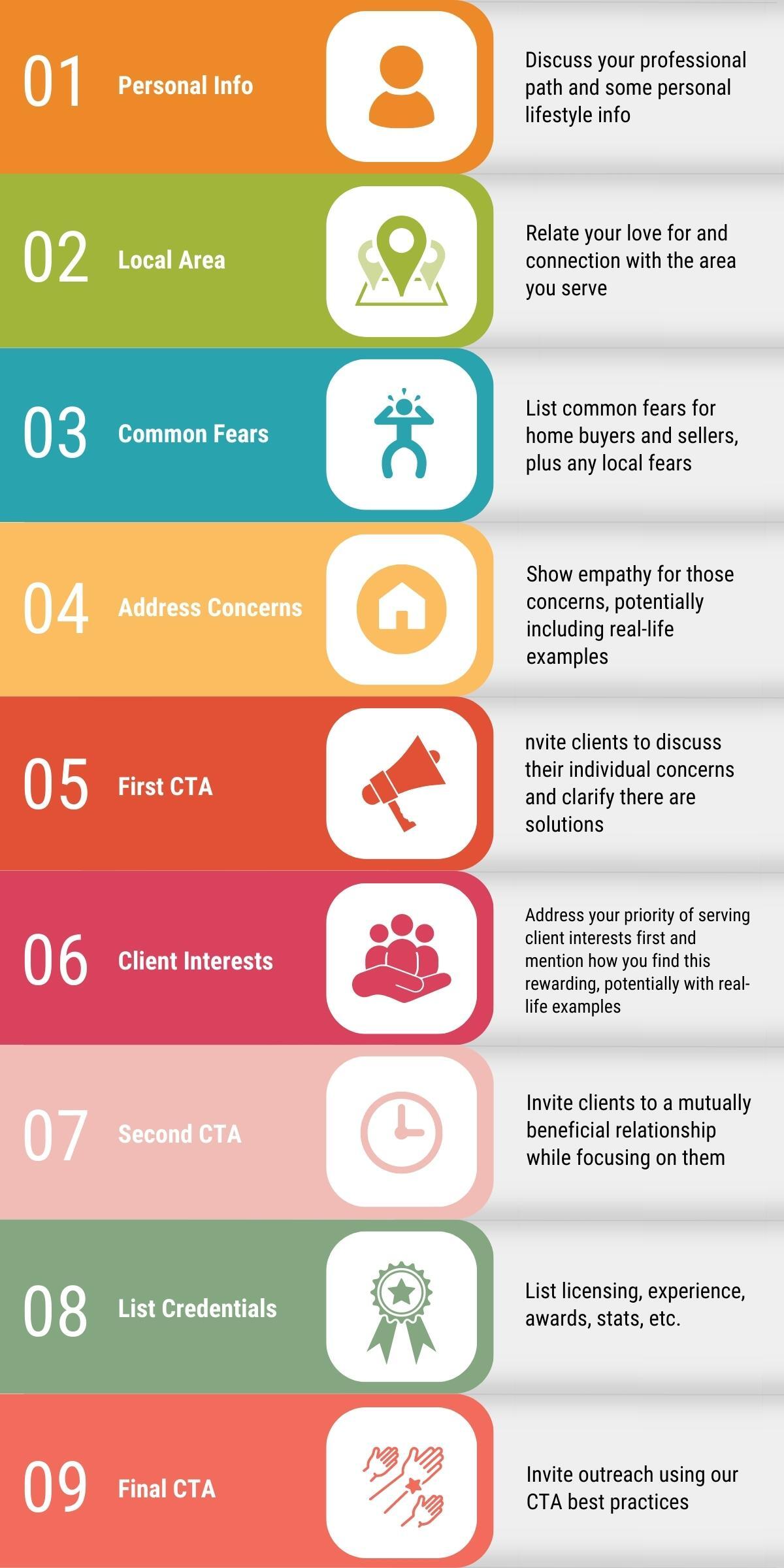
Loose vs. Tight Agent Bio Scripts
Some of you will feel comfortable using a loose script, while others will feel best following a word-for-word script. For me, I prefer loose scripts with talking points. They feel more organic and conversational, which is important for establishing yourself as approachable.
That said, I’ve made the mistake of rambling on occasion. Tighter scripts can counteract this tendency for those of you who, like me, can get a bit ADHD.
Pro Tip: If you choose a word-for-word script, consider using a teleprompter app on your tablet or desktop. There are plenty of free options on every app store.
Example Real Estate Bio Videos
1. Jillian Allen
Key Takeaways
- Note how the opening line, “I love helping people” is a snappy, distilled version of our advice in the Client Interest section. It serves as a four-word foundation for her entire value proposition.
- Jillian’s video is among the most viewed agent bio videos on YouTube. Note how it’s essentially a highly condensed version of our strategy.
2. Laura Riascos-Sangster
Key Takeaways
- Note how this video echoes our advice to talk about yourself. For example, she mentions loving the opportunity to tour beautiful homes. This may not translate to a direct benefit for customers, but demonstrating your passion for the job is always a good decision.
- If you choose to include quotes to punctuate your video, I would recommend choosing more relevant quotes and backgrounds with better visibility.
- This may be a matter of personal taste, but I prefer not to use stock B-roll, which feels generic and even perhaps impersonal. If you choose to create a higher production value real estate bio video, opt for the kind of B-roll found in Carla Ng’s video below.
- Note how even the background music echoes Laura’s personal background.
3. Carla Ng
Key Takeaways
- This real estate agent bio video really highlights Carla’s upbeat personality and friendly relationships with her clients. It paints her in a great light, which you should try to emulate.
- Carla serves a luxury market and chose a highly-polished video to suit her branding. In my opinion, the way she’s looking off-camera, clearly reads a script, and speaks like someone addressing a camera rather than a person all contribute to less effective content. Many luxury agents follow this game plan. But even for ultra-luxury agents, I would advise choosing a more personal, less professional style. Check out Chauncey Pham below to see exactly what I mean.
4. Chauncey Pham
Chauncey’s video gets a special introduction because it’s a shining example of content that follows my guidelines, but it takes the liberty of conforming to her personality and style.
Of all the real estate bio videos, this one has my gold star for the most convincing. It reflects a deep understanding of what inspires people to connect with you. It’s no surprise she has 20K subscribers.
Key Takeaways
- Chauncey’s agent intro video is a fantastic example of inspiring outreach from clients while essentially talking about yourself.
- I could be wrong, but it feels like Chauncey was instructed to look slightly off-camera, but her instincts told her to make regular “eye contact” with the viewer. That’s worth copying if you want to balance professionalism with personal connection.
- Note how she may have a word-for-word script, but still speaks to the camera like she’s confidently addressing a small group of people. Bravo.
5. Alona Tetter
Key Takeaways
- I love this B-Roll moment around 0:24 where the client makes a comment, and Alona gives her full attention, listens actively, and makes eye contact with her client. If you’re looking for effective B-Roll content, that’s a great idea. It would have been even better without sunglasses.
- Same goes for the laughing B-Roll. If you have fun with your clients, let that show!
- It’s great how Alona mentions the challenge of aligning client expectations with reality. The idea that you need to promise heaven and earth is outdated and unconvincing. HGTV has taught the US that homebuyers can become unreasonable. A realtor who’s ready to face that challenge with poise and understanding is valuable.
6. Alex Kolesar
Key Takeaways
- Alex’s realtor introduction video is a nice example of editing that can be done with a smaller or non-existent budget.
- I don’t love the script, and the final scene interaction feels inauthentic. But I do like how he included facts about himself that speak to his clientele, namely his military service. High-five to that.
- His crisp yet dressed-down attire suits his target market, which is good branding.
Schedule a Meeting
Let’s chat about how an SEO-focused website that YOU OWN, Google Business Profile Campaigns, or Custom Email Campaigns can generate high-quality leads and exceptional long-term ROI. If my services aren’t the best move for you, I’ll gladly point you in the right direction

